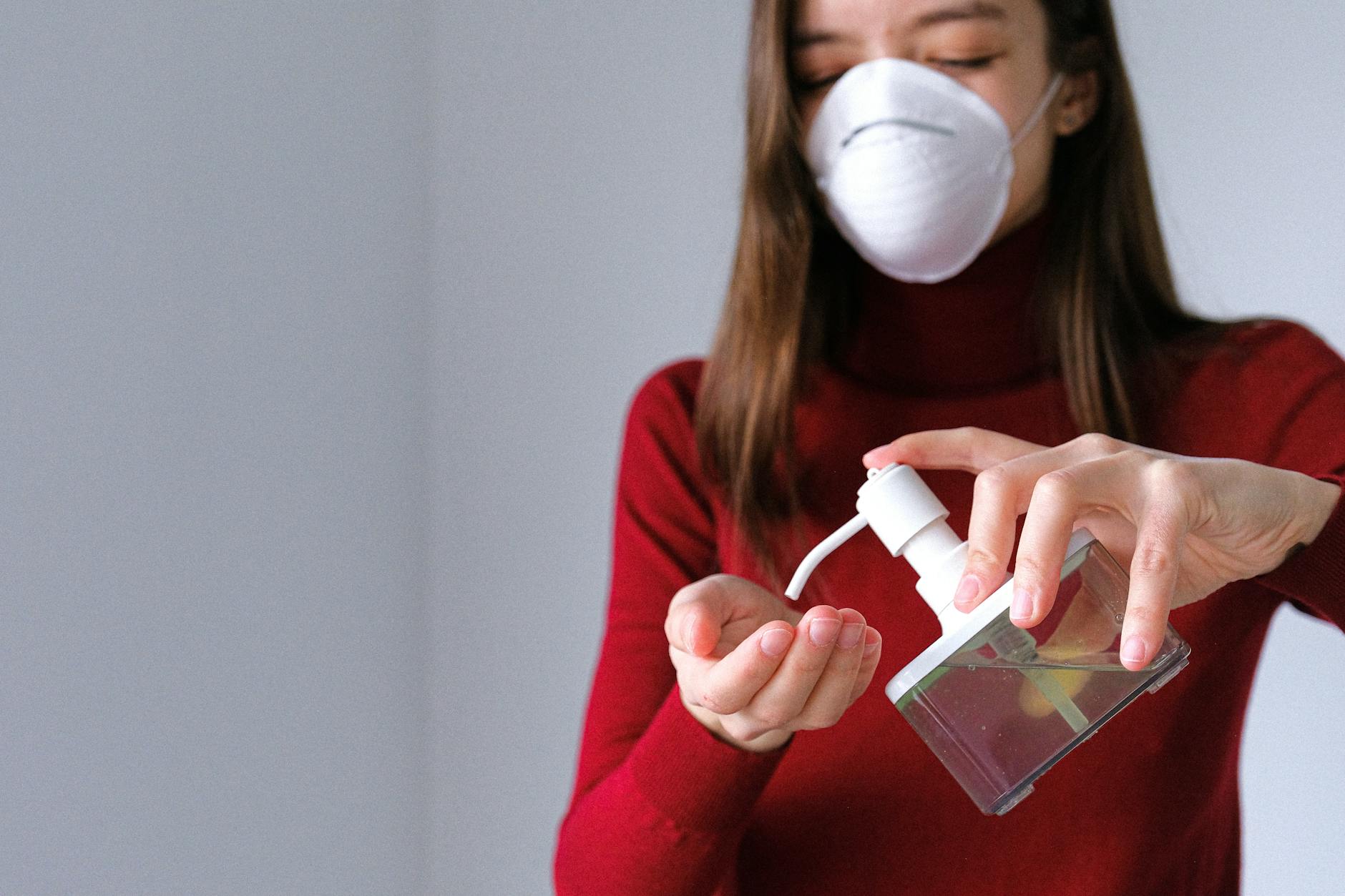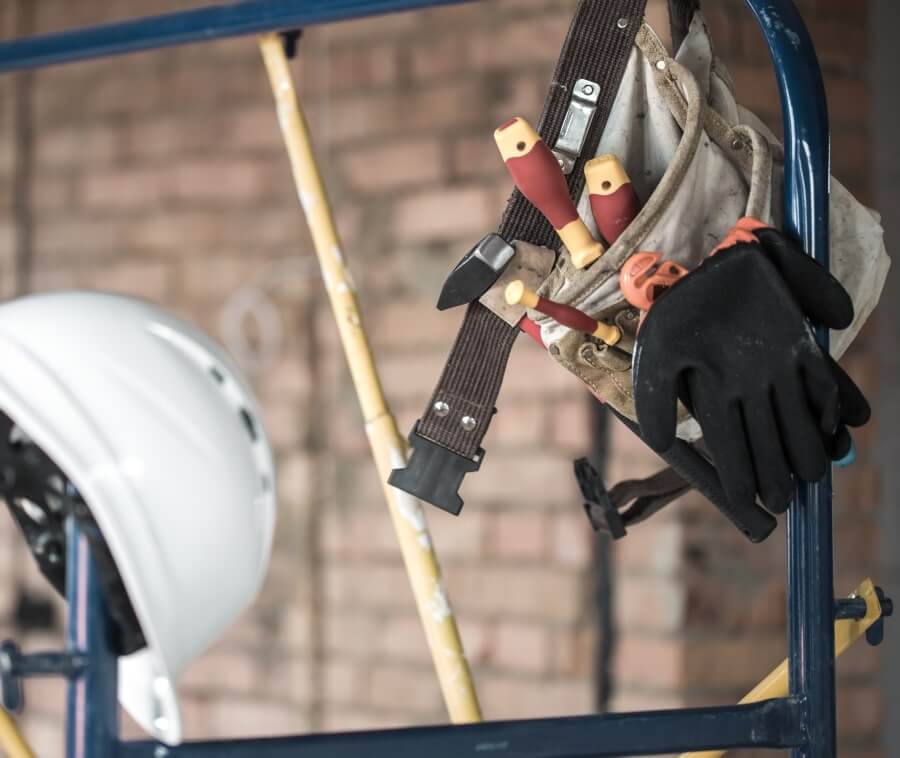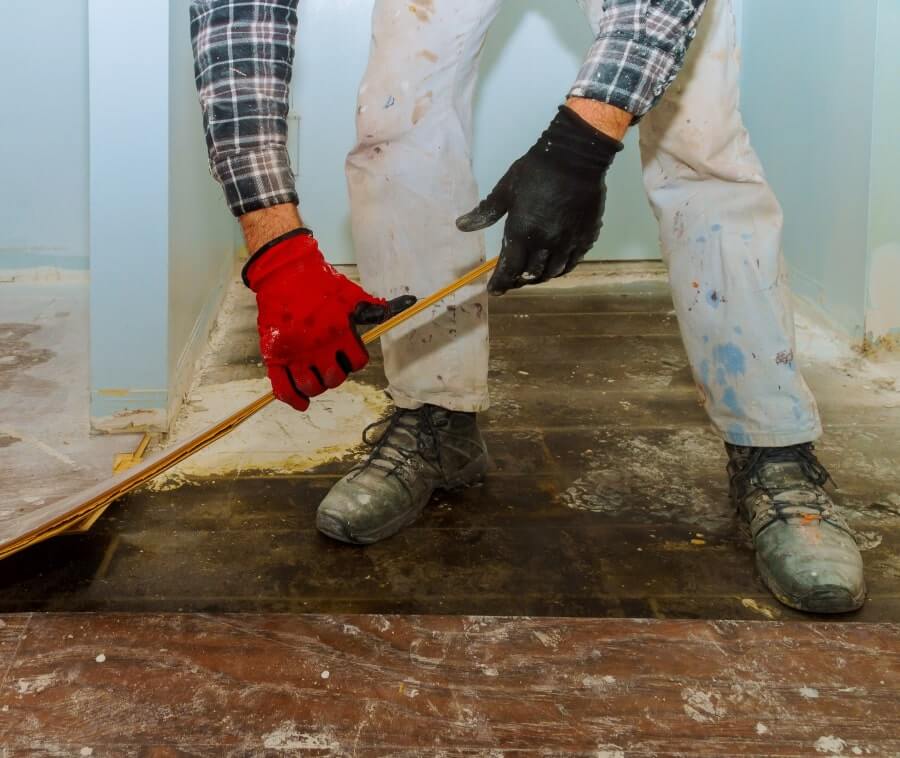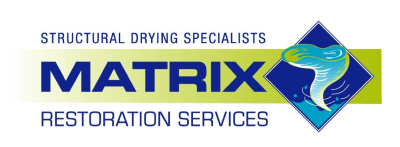Mold is one of those topics that seems to bring out plenty of misinformation. Whether it’s assumptions about how it grows, how dangerous it is, or the best ways to deal with it, these myths often lead to unnecessary stress—or worse, ineffective solutions. The truth is, mold can be a real problem when misunderstood, but it doesn’t have to be the monster it’s made out to be. By separating fact from fiction, we can take smarter steps toward prevention and proper care, without falling victim to common misconceptions. Let’s set the record straight.
Myth 1: Mold Only Grows in Dirty Homes
One of the biggest misconceptions about mold is that it only thrives in unclean or neglected environments. While cleanliness can certainly help reduce mold spores on surfaces, the real culprit behind mold growth is moisture. Mold doesn’t discriminate—your home can sparkle like a showroom and still experience a mold issue if the conditions are right.
The Role of Humidity and Moisture

Mold, at its core, is a moisture problem, not a dirt problem. Even the cleanest homes can fall victim to mold when humidity levels stay consistently high or water damage occurs. Whether it’s a small roof leak, condensation around windows, or unventilated bathrooms, any excess moisture creates an open invitation for mold to grow.
For instance, humid climates are particularly challenging. Homes in these areas often struggle to maintain indoor humidity between the safe range of 30% to 50%. When humidity rises above 60%, the air contains enough moisture to spur mold growth. That’s why dehumidifiers and proper ventilation are essential tools for keeping mold at bay—cleanliness alone won’t suffice.
Here are some common moisture-prone areas where mold often takes hold:
- Bathrooms: Without proper air circulation, moisture from daily showers can create an ideal breeding ground.
- Basements: Naturally cooler and often damp, basements become a prime location for trapped moisture.
- Windowsills: Condensation during colder months can build up and leave surfaces damp.
- Kitchens: Cooking and dishwashing generate steam, which, without ventilation, contributes to humidity.
Mold in Newer Homes
The assumption that mold is only an issue in older, rundown houses is another common myth. Surprisingly, newer homes aren’t immune to mold—and sometimes may even be more vulnerable due to modern construction practices. While contemporary builds include energy-efficient designs, these sealed environments can actually trap moisture unless properly managed.
Take, for example, the use of vapor barriers. While they’re meant to prevent moisture intrusion, improper installation can have the opposite effect. If water becomes trapped between layers, like concrete slabs and flooring materials, it creates a hidden space for mold to develop.
Likewise, construction materials play a role. If lumber is stored improperly—such as being left outside, exposed to rain, or even absorbing ground moisture—it can already harbor mold by the time it’s installed. Once the frame of the house is up, if the wood isn’t allowed to dry properly before insulation or drywall is added, the trapped moisture can foster an environment for mold.
What about spray foam insulation? While it’s great for energy efficiency, it’s less forgiving when applied to wood with a high moisture content. Any dampness sealed in with the insulation may worsen over time, creating a problem hidden behind walls—out of sight and out of mind until symptoms like odors or stains appear.
New homes can also experience condensation issues in attics, basements, or around HVAC systems due to poor temperature regulation or inadequate ventilation—problems that aren’t always visible until it’s too late. Mold in new construction isn’t about neglect but about addressing moisture risks from the start. Proper prevention steps are key, regardless of a property’s age.
Myth 2: Small Amounts of Mold Are Harmless
When people notice small patches of mold in their homes, it’s tempting to brush them off as no big deal. After all, they’re easy to wipe away, right? But even minimal mold growth has the potential to cause problems that extend beyond what’s visible on the surface. Let’s take a closer look at why ignoring the problem could be a mistake.
Health Impacts of Low Mold Levels
Even small amounts of mold can trigger significant health reactions, especially for individuals in sensitive groups like children, the elderly, or those with asthma and compromised immune systems. Mold produces allergens, irritants, and, in some cases, toxic substances known as mycotoxins that you can breathe in without realizing it.
You might experience symptoms like:
- Sneezing and nasal congestion
- Coughing or wheezing
- Red or itchy eyes
- Skin irritation or rashes
Asthma sufferers can have it even worse. Mold exposure may cause asthma attacks or exacerbate symptoms. For vulnerable individuals, these symptoms might escalate into more serious respiratory conditions. Children exposed to mold early on could even face an increased risk of developing asthma.

What’s particularly concerning is that mold exposure can affect people differently. While some may feel immediate symptoms, others could develop long-term sensitivities over time. So, that “small patch” in your bathroom or basement may not be as harmless as it seems.
Why Mold Growth Signals a Bigger Problem
Seeing mold, no matter the amount, usually means one thing: there’s excessive moisture somewhere in your home. Mold thrives in damp conditions, making its presence a red flag for underlying issues like leaks, condensation, or poor airflow.
Here are common causes behind mold growth:
- Plumbing leaks: Slow drips under sinks or behind walls create hidden mold-friendly environments.
- Roof leaks: Water sneaking through damaged roofing can result in mold spreading to ceilings and walls.
- Condensation: Poor insulation or fluctuating temperatures lead to excess moisture on windows, pipes, and walls.
- Inadequate ventilation: Spaces like bathrooms and kitchens, without proper ventilation, trap humidity, allowing mold to flourish.
Ignoring these issues won’t make them disappear. Small mold spots can rapidly grow and spread if the underlying moisture isn’t addressed. This can lead to significant property damages or costly repairs, not to mention worsening health risks for your family.
While cleaning surface mold may seem like an easy fix, remember that mold spores aren’t confined to what you can see. They can settle into porous materials like drywall, carpets, or wood, making the problem harder to eliminate entirely. That small patch of mold? It could be the tip of the iceberg, hiding much larger moisture problems within.
Myth 3: Bleach Is an Effective Mold Remover
It’s a myth that’s been around for decades: bleach is the ultimate solution for mold removal. After all, it’s a trusted household cleaner, right? Not so fast. While bleach might seem like a straightforward fix, it’s more of a band-aid than a cure—and it can actually make the problem worse. Let’s break down why this common belief doesn’t hold up and explore better, safer options for handling mold.
Why Bleach Can Make Mold Problems Worse
For many people, bleach is the go-to cleaner for tough jobs. The logic is simple: bleach kills germs, so why wouldn’t it kill mold? Unfortunately, mold isn’t that easy to deal with. Bleach doesn’t address the root of the problem, especially when mold grows on porous materials like wood, drywall, or fabric.
Here’s the issue:
Bleach is made up of water and sodium hypochlorite. When applied to mold, the water component can seep into porous surfaces like sponges, creating even more moisture—exactly what mold needs to continue growing. Although bleach may kill the surface mold, it doesn’t penetrate deep enough to remove the mold spores embedded within the material. Essentially, you’re bleaching away the visible signs of mold without solving the underlying problem.
Even worse, disturbing mold with ineffective treatments like bleach can release spores into the air. These tiny particles can spread throughout your home, settling into other areas and creating new colonies. Instead of eliminating the mold, bleach may open the door for it to spread further.
To complicate things, bleach’s ability to kill mold is neutralized when it comes into contact with organic materials, which include many of the surfaces mold likes to grow on. This means bleach often fails to kill the mold completely, leaving the door open for regrowth.
If bleach wasn’t enough of a gamble, it also poses health risks. The fumes can irritate the eyes, lungs, and skin, and in some cases, mixing bleach with other chemicals can be dangerously toxic. Mold is already a health hazard—you don’t need to add bleach exposure to the mix.
Safe and Effective Alternatives to Bleach
So, how do you safely handle mold without causing more harm than good? The good news is there are better ways to tackle mold—whether you’re handling minor spots on your own or calling in the pros for larger infestations.
Here are some safer alternatives and strategies:
For Small Mold Spots (DIY Approach)
If the mold covers a surface smaller than 10 square feet, you can often address it safely yourself. Instead of bleach, opt for one of these solutions:
- White Vinegar: A cheap, natural option, vinegar can kill about 80% of known molds. Spray undiluted vinegar directly onto the mold, let it sit for an hour, then scrub with a brush or sponge.
- Hydrogen Peroxide: This is another effective, non-toxic option. Spray a 3% hydrogen peroxide solution onto the mold and let it bubble for 10 minutes. Scrub and wipe away the residue with a damp cloth.
- Soap and Water: For non-porous surfaces (like tiles or glass), a simple mix of soap and water can often do the job. It physically removes the mold rather than just bleaching it.
Pro Tip: Always wear protective gloves, goggles, and a mask when tackling mold to protect yourself from exposure to harmful spores.
For Large-Scale Mold Issues
When mold has spread across larger areas or into the structure of your home, it’s time to bring in the experts. Professional mold remediation companies don’t rely on bleach. Instead, they use specialized equipment and techniques to remove mold safely and completely. Here’s how they usually handle the job:
- Identifying the Source: Professionals start by locating and addressing the moisture problem causing the mold growth. Without fixing leaks or improving ventilation, mold will just return.
- HEPA Filtration: High-efficiency air filters capture airborne spores to prevent them from spreading during cleanup.
- Removal of Contaminated Materials: Porous materials like drywall or carpet might need to be removed entirely if the mold has taken hold.
- Non-Toxic Mold Killers: Professionals use products designed to kill mold at its roots—solutions that are far more effective than bleach could ever be.
- Preventive Measures: Once the mold is gone, experts can recommend ventilation systems, dehumidifiers, or waterproof coatings to reduce the risk of mold coming back.
The most crucial step in mold prevention and remediation? Fixing the moisture problem. No matter how well you clean, mold will return if your home stays damp and humid.
By leaving bleach behind and choosing safer, more effective methods, you’ll not only protect your home but also safeguard the health of your family. When it comes to mold removal, the right approach makes all the difference.
Myth 4: Mold Isn’t Dangerous When It’s Dead
At first glance, dead mold might seem harmless—after all, if it’s no longer active, how could it possibly pose a risk? Unfortunately, dead mold is far from benign. Even after it has stopped growing, its remnants can wreak havoc on both health and home environments. Proper remediation requires more than simply killing mold—it demands comprehensive removal to eliminate potential hazards.
Health Risks of Dead Mold

Dead mold spores might not visibly spread like active mold, but they can still cause significant health issues. These microscopic particles can drift through the air, enter your lungs, and trigger reactions that range from mild to severe. People with asthma, allergies, or weakened immune systems are especially vulnerable—but no one is truly immune to its effects.
Here are common health issues caused by dead mold:
- Respiratory problems: Dead spores can exacerbate existing breathing conditions like asthma or lead to the development of bronchitis or sinus infections.
- Allergic reactions: Symptoms such as sneezing, coughing, and itchy eyes can be provoked by exposure to airborne spores, even after the mold itself has “died.”
- Fatigue and headaches: Mycotoxins, which are toxic chemicals that some molds produce during their lifecycle, can persist in dead mold and are known to cause chronic fatigue or migraines when inhaled.
What makes dead mold particularly insidious is how it lingers. Disturbing it—whether through cleaning or construction work—can stir up dormant mold particles, sending them back into the air. Without proper containment and removal techniques in place, you’re essentially recycling the same health risks into your environment.
Why Dead Mold Indicates Unresolved Issues
The presence of dead mold in your home isn’t just a health risk—it’s a red flag that points to unfinished business. Killing mold without removing it simply addresses the surface problem while ignoring the root cause: moisture.
Here are a few reasons why dead mold often signals deeper, unresolved issues:
- Moisture remains unchecked: Dead mold can’t thrive without water, but its existence suggests moisture levels have—at least at one point—been too high. If the source of the dampness hasn’t been addressed, you’ll likely see live mold returning soon.
- Improper remediation: Effective mold cleanup doesn’t mean just spraying antifungal solutions. If all contaminated materials (from drywall to porous flooring) aren’t properly removed or cleaned, the leftover spores can reinfect an area at the slightest hint of moisture.
- Airborne contamination: Even dead, mold poses challenges for indoor air quality. This is especially true when affected surfaces haven’t been sealed, cleaned, or vacuumed with a HEPA filter, allowing particles to settle into HVAC systems or furniture.
Dealing with visible mold but skipping the full remediation process is like putting a band-aid on a leaky faucet. You may not see immediate signs of trouble, but the problem is still there, waiting to resurface.
Best practices for proper mold removal include:
- Fixing the source of moisture immediately—whether it’s a plumbing issue, condensation, or ventilation problem.
- Physically removing all traces of mold (dead or alive) from surfaces, walls, and hidden spaces.
- Ensuring cleanup involves tools like HEPA-filtered vacuums that capture microscopic spores and prevent redistribution.
Dead mold may look harmless on the surface, but it’s never a “safe” problem to ignore. Addressing it thoroughly takes a combination of health-conscious practices and vigilant moisture management.
Myth 5: Mold Can Be Fully Eliminated
It’s a common belief that homes and buildings can be entirely rid of mold. The truth? Mold spores are everywhere—in the air we breathe, on surfaces, and even in clean environments. While it’s not realistic to eliminate mold entirely, you can control its growth by addressing the factors that allow it to thrive. Let’s discuss why controlling mold is an ongoing effort, not a one-time fix.
Understanding Mold Spore Presence

Mold spores are a natural part of the environment—they’re as ever-present as dust particles. Found both indoors and outdoors, these microscopic spores float through the air, often unnoticed. The mere presence of mold spores isn’t inherently harmful. In fact, they only become a problem when they settle on damp surfaces and begin to grow.
In a healthy indoor space, the concentration of mold spores should roughly match outdoor levels. That’s because maintaining proper ventilation and steady airflow helps prevent mold from establishing an excessive or harmful presence indoors. Problems arise when conditions tip the balance—like poor ventilation, high humidity, or water damage—creating a haven for toxic or allergenic molds to flourish.
Here are some important points to consider about mold spores:
- They thrive in damp environments but are dormant when dry.
- Most surfaces—even tile and metal—can provide nutrients for mold under the right conditions.
- Removing visible mold doesn’t eliminate spores; they’re airborne and can remain dormant for years until moisture triggers growth.
The focus, therefore, isn’t about eradicating every single spore—because that’s impossible. Instead, controlling factors like humidity and moisture is your best defense against dangerous mold growth.
The Importance of Moisture Control
If mold is nature’s opportunist, then moisture is its greatest ally. Mold absolutely needs water to grow. Without it, spores simply cannot establish colonies or spread. This is why experts emphasize moisture control as the cornerstone of any mold prevention strategy.
What makes moisture so tricky to manage is how easily it can build up in common household areas. Routine activities like cooking, showering, or even drying clothes indoors contribute to indoor humidity levels. When water is left to linger—whether it’s a leaky pipe or trapped condensation—it creates the perfect environment for mold to thrive.
Key steps for moisture control include:
- Fix leaks and repair water damage quickly: Whether it’s a dripping faucet, a cracked foundation, or a roof leak, make repairs as soon as you spot an issue.
- Keep indoor humidity below 50%: Use dehumidifiers in spaces like basements or bathrooms and check humidity levels regularly with a hygrometer.
- Ventilate damp areas: Ensure bathrooms, laundry rooms, and kitchens are properly vented to the outdoors, not just into your attic or another sealed space.
- Use exhaust fans: Run kitchen and bathroom fans every time you cook or take a shower to reduce excess moisture.
- Improve drainage around your home: Poor exterior drainage can lead to water pooling near your foundation, fueling moisture levels indoors.
By addressing moisture at its source, you stop mold before it can even start. This approach is proactive and far more effective than trying to fight established infestations time and time again. When mold can’t meet its number one survival requirement—water—it simply can’t grow, putting you in control of your home’s air quality and structural integrity.
Conclusion
Mold is often misunderstood, but the facts are clear: it doesn’t discriminate based on home age or cleanliness, and even small amounts can signal a deeper issue. Myths like relying on bleach for removal or thinking dead mold is harmless can lead to bigger problems, from health risks to recurring infestations.
Addressing mold properly starts with targeting moisture—the root cause of its growth. Whether it’s fixing leaks, improving ventilation, or maintaining low indoor humidity, these steps are crucial. For larger outbreaks, professional help ensures thorough remediation and lasting results.
Don’t let misconceptions steer you wrong. Mold management is about prevention, proper cleanup, and staying informed. Take action today to protect your health, home, and peace of mind.






